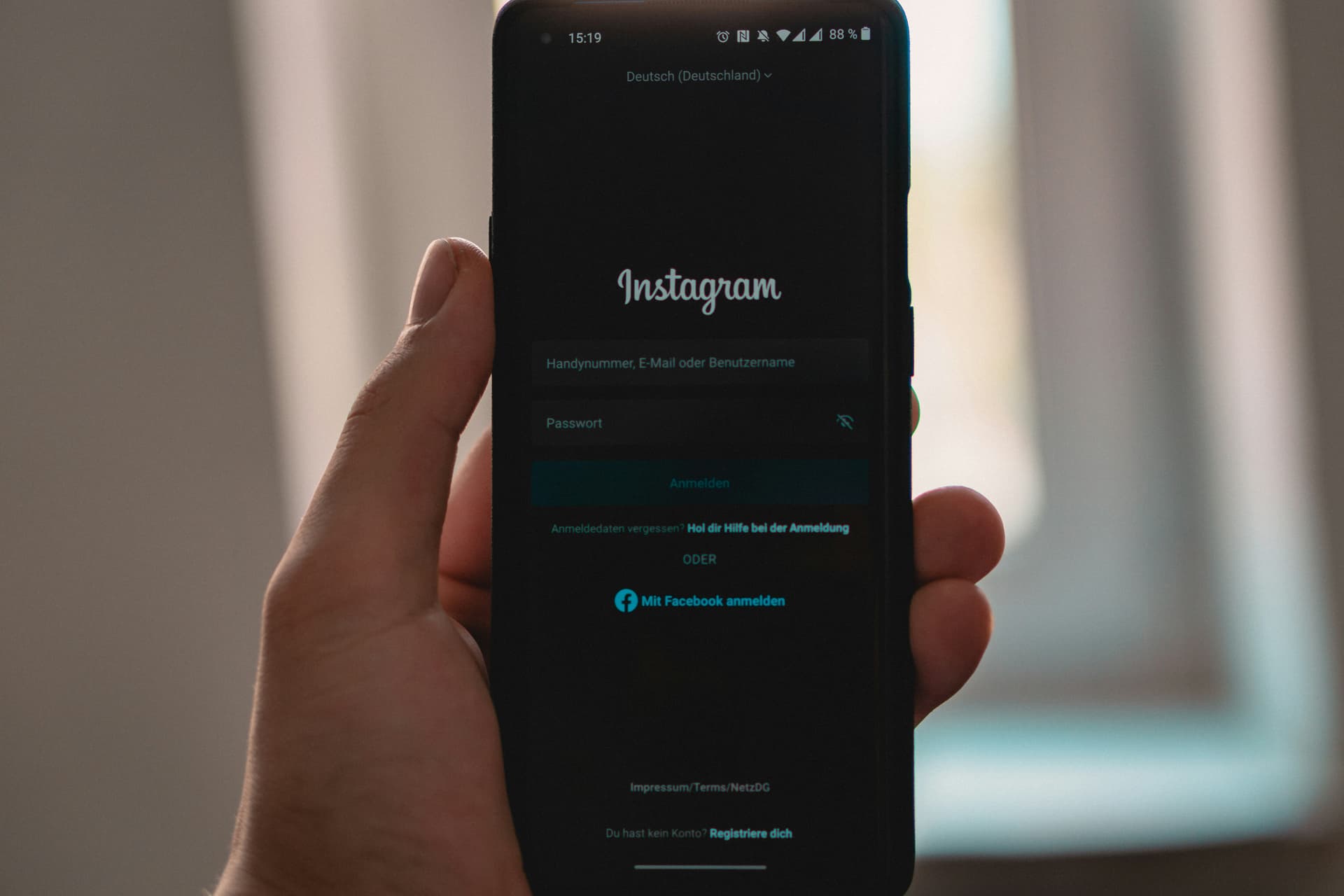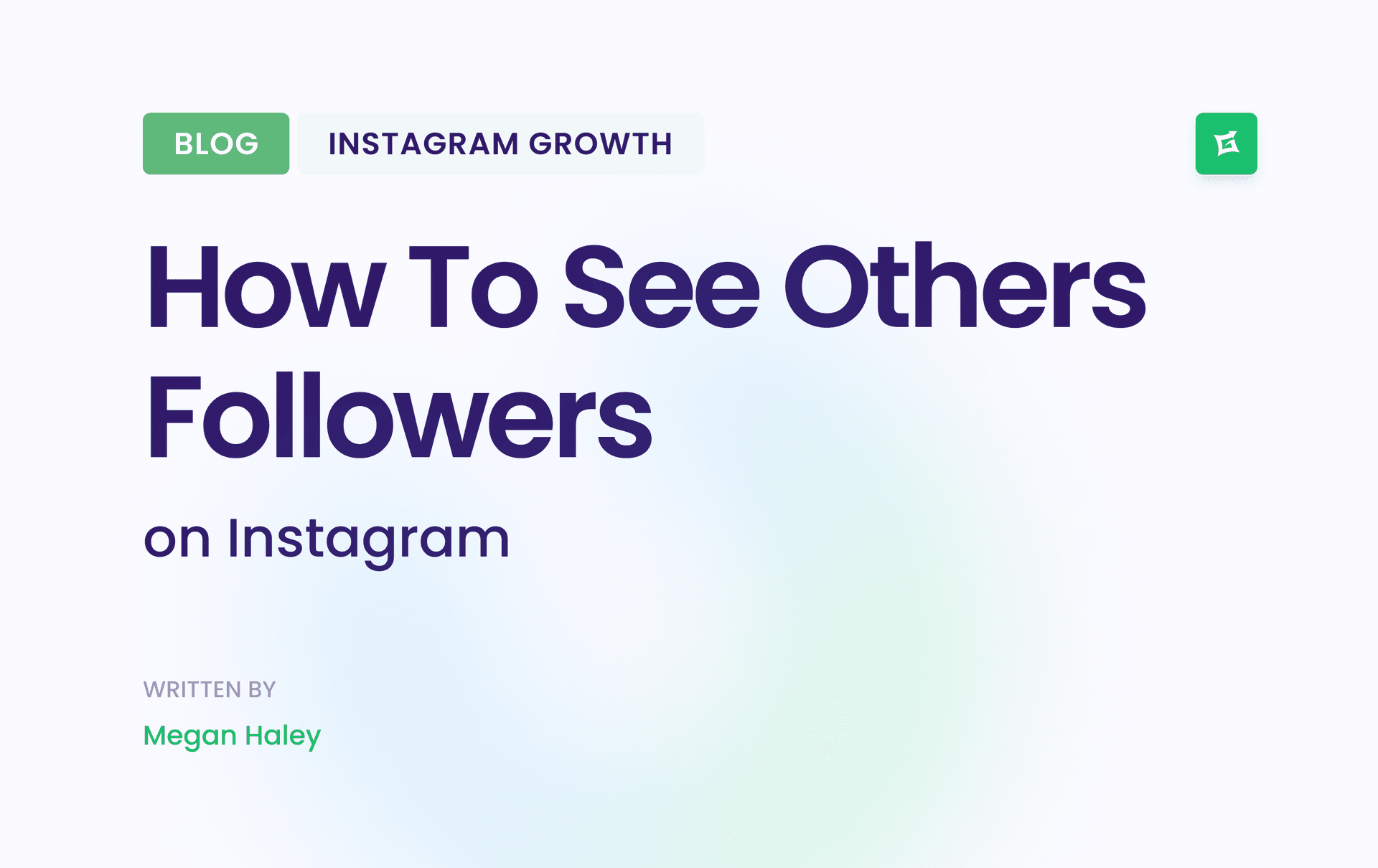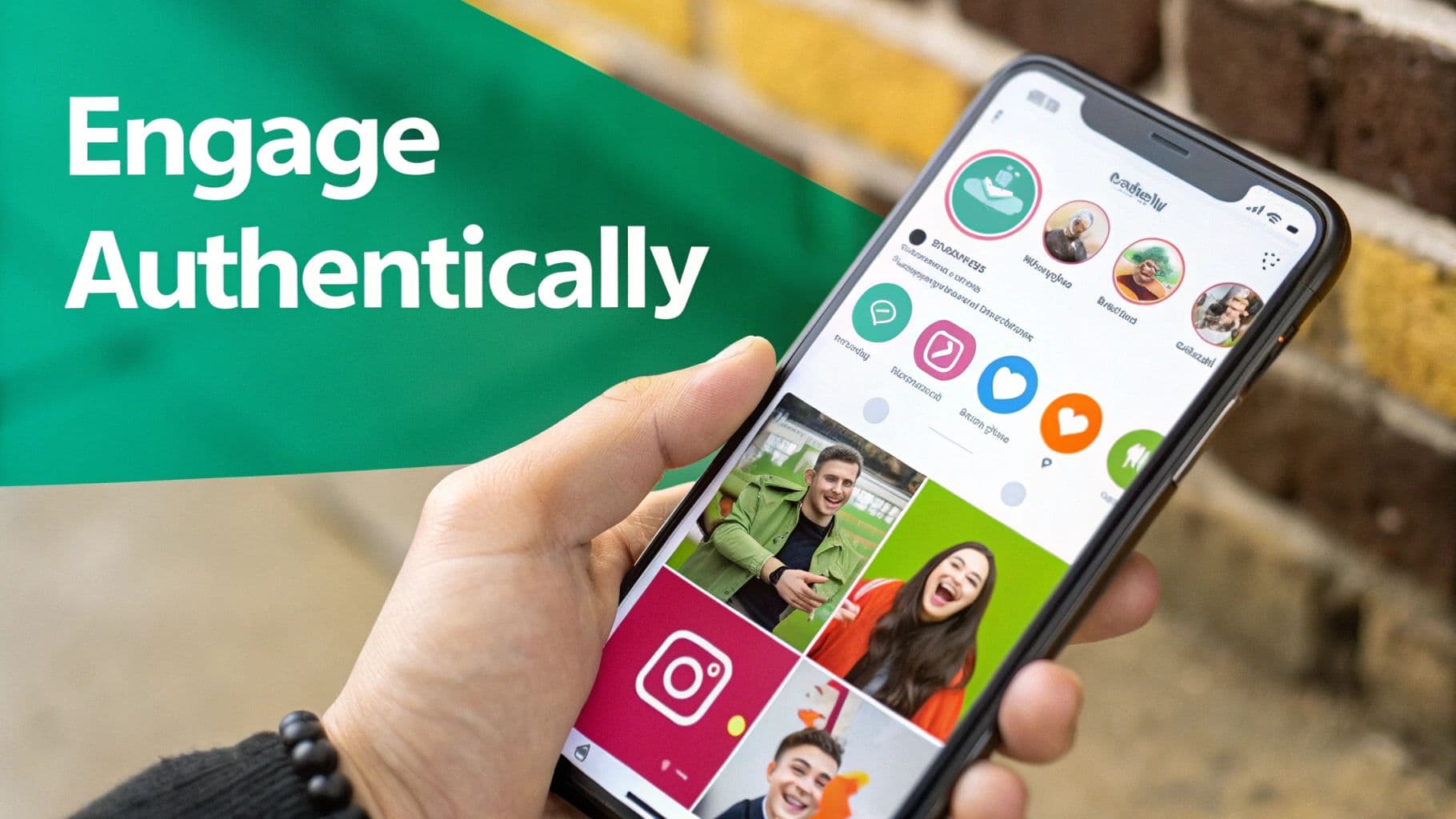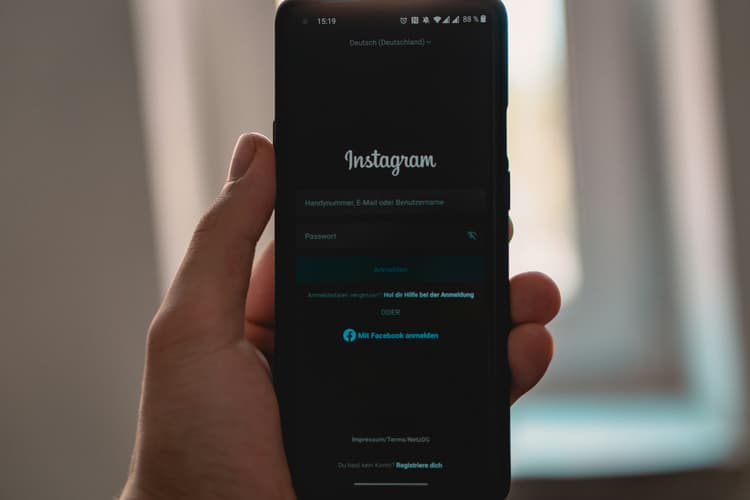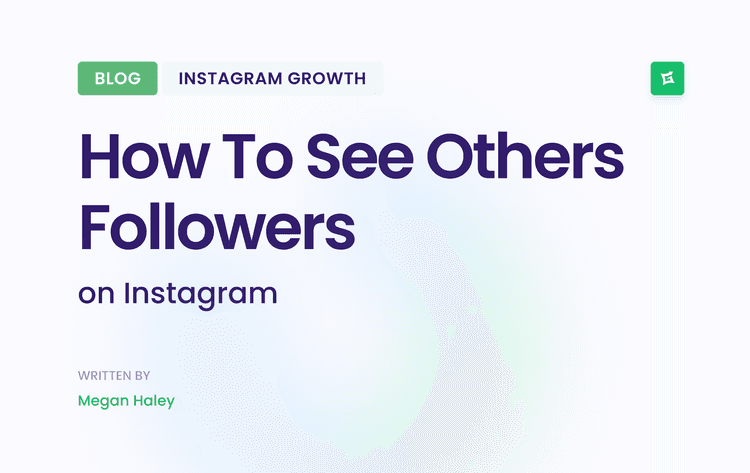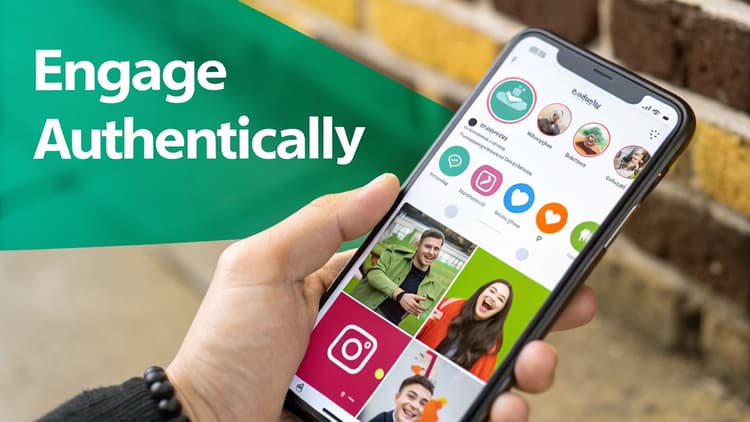Ready to Level Up Your Agency?
1. Niche Specialization Strategy
One of the most effective agency growth strategies is niche specialization. This approach involves focusing your agency's services on a specific industry vertical, service type, or client segment, rather than trying to be everything to everyone. By becoming a specialist, your agency can develop expertise in a particular area, command premium pricing, and effectively differentiate itself in a crowded marketplace. This allows you to become the go-to expert for a specific type of client, rather than just another generalist agency competing on price.

This strategy leverages the power of focused expertise. Instead of spreading resources thin across various sectors, a niche agency invests deeply in understanding the nuances of its chosen area. This translates into specialized knowledge, targeted case studies, and tailored messaging that resonates deeply with the target audience. By developing industry-specific methodologies and frameworks, niche agencies can deliver highly effective and customized solutions that generalist agencies often struggle to replicate.
Features of a Niche Specialization Strategy:
Focused expertise: Deep understanding of a single industry or service type.
Specialized knowledge and case studies: Demonstrable results within the niche.
Tailored messaging and positioning: Marketing materials speak directly to the target audience's specific needs and pain points.
Industry-specific methodologies and frameworks: Proprietary processes optimized for the niche.
Pros:
Higher perceived value allows premium pricing: Clients are willing to pay more for specialized expertise.
Easier to establish thought leadership: Become a recognized authority in your niche.
More efficient operations through standardization: Streamlined processes are designed for a specific type of work.
Clearer marketing message and positioning: Easier to target and attract ideal clients.
Reduced competition compared to the generalist space: Less direct competition from larger, generalist agencies.
Cons:
Limited market size and potential ceiling: Growth potential is capped by the size of the niche.
Vulnerability to industry downturns: Over-reliance on a single industry can be risky.
Risk of service commoditization over time: As more specialists enter the niche, competition can increase.
It can be difficult to pivot if the market changes: Adapting to new markets or services can be challenging.
Examples of Successful Niche Specialization:
Fintechsavvy (hypothetical example): Focused exclusively on financial technology marketing.
Seer Interactive: Initially specialized in SEO before expanding.
Bottle Rocket: Focused initially only on mobile app development.
Healthcare Success: Marketing exclusively for healthcare providers.
Tips for Implementing a Niche Specialization Strategy:
Choose a niche with growing demand and limited specialist competition: Research market trends and identify underserved areas.
Develop proprietary methodologies specific to your niche: Create unique processes and frameworks that deliver superior results.
Attend and speak at industry-specific conferences: Network and establish yourself as a thought leader.
Create content that demonstrates specialized knowledge: Share valuable insights through blog posts, white papers, and case studies.
Build relationships with other service providers in your niche: Develop strategic partnerships and referral networks.
Popularized By:
David C. Baker (author of The Business of Expertise)
Blair Enns (author of The Win Without Pitching Manifesto)
Philip Morgan (consultant on positioning professional services)
This strategy deserves a place on this list of agency growth strategies because it offers a powerful pathway to differentiation, premium pricing, and sustainable growth. By focusing on a specific niche, agencies can build a strong reputation, attract ideal clients, and achieve greater profitability than they might as a generalist agency. This is particularly beneficial for small businesses, startups, and marketing agencies looking to establish a strong foothold in a competitive market. For influencers and content creators, niche specialization can translate to a highly engaged audience and increased opportunities for collaboration.
2. Content-Driven Lead Generation
Content-driven lead generation is a powerful agency growth strategy that focuses on attracting potential clients organically through valuable, informative, and engaging content. Instead of relying solely on outbound sales tactics or referrals, this approach positions your agency as a thought leader and trusted resource within your industry, drawing in potential clients who are actively searching for solutions to their problems. By consistently producing high-quality content across various platforms, you build a sustainable lead pipeline that drives long-term growth. This inbound marketing methodology creates a 24/7 lead generation system, working tirelessly even when your team isn't actively prospecting.

This approach encompasses a range of content formats, from blog posts and articles to podcasts, videos, white papers, and infographics. The key is to tailor your content to the different stages of the buyer’s journey, providing relevant information that addresses their specific needs and pain points at each step. A strong SEO focus ensures your content ranks high in search results, capturing organic traffic from potential clients actively seeking solutions. Furthermore, integrating lead capture mechanisms like email signup forms and gated content allows you to nurture these leads and move them closer to conversion. Learn more about Content-Driven Lead Generation
Examples of Successful Implementation:
HubSpot: Built their business model on inbound marketing content, creating a vast library of resources and educational materials that attract and engage potential clients.
Moz: Grew significantly through SEO-focused content and free SEO tools, establishing itself as a leading authority in the SEO industry.
Orbit Media: Leverages annual industry surveys as lead magnets, providing valuable data and insights while capturing lead information.
Backlinko: Established a strong following and grew through in-depth SEO guides and case studies, demonstrating their expertise and generating leads.
Actionable Tips for Agencies:
Focus on Problem-Solving: Create content that addresses the specific challenges and pain points your ideal clients face.
Create Content Clusters: Develop interconnected content pieces around core service offerings to establish topical authority and improve SEO.
Repurpose Content: Maximize reach and efficiency by repurposing content across multiple formats and channels (e.g., turn a blog post into a video or infographic).
Clear Calls to Action: Include compelling calls to action in all your content, guiding users towards the next desired action (e.g., downloading a resource, scheduling a consultation).
Gated Content: Strategically use gated content, like ebooks or webinars, to capture lead information in exchange for valuable content.
Track and Analyze: Monitor which content pieces are driving qualified leads to refine your strategy and focus on high-performing formats.
Pros and Cons:
Pros:
Builds credibility and thought leadership
Creates a 24/7 lead generation system
Generates more qualified leads with higher conversion rates
Compounds in value over time (evergreen content continues to attract leads)
Less vulnerable to algorithm changes than paid advertising
Cons:
Requires significant time investment before seeing results
Needs consistent content creation resources (writers, designers, etc.)
Competitive in popular topics/keywords
Difficult to measure the exact ROI in the short term
Content needs regular updates to remain relevant
When and Why to Use This Approach:
Content-driven lead generation is ideal for agencies that are:
Focused on long-term, sustainable growth
Looking to build a strong brand identity and establish thought leadership
Targeting clients who are actively researching solutions online
Willing to invest time and resources in content creation and promotion
This strategy deserves a prominent place in any agency's growth plan because it creates a predictable and sustainable lead pipeline, reducing reliance on unpredictable outbound sales or referrals. By consistently providing valuable content, you attract the right clients who are already interested in your services, leading to higher conversion rates and stronger client relationships.
3. Strategic Partnerships & Referral Networks
One of the most effective agency growth strategies is building strategic partnerships and referral networks. This approach centers around forming mutually beneficial relationships with complementary service providers, technology platforms, or industry influencers who can refer clients or collaborate on projects. These partnerships can create a steady stream of pre-qualified leads while simultaneously extending your agency's service capabilities and reach. Imagine tapping into an existing network of trust and influence – that's the power of strategic partnerships.

This strategy deserves a prominent place on any agency's growth agenda because it offers a scalable and cost-effective way to acquire high-quality clients. Instead of relying solely on expensive and time-consuming outbound sales efforts, you can leverage the existing trust and authority of your partners to generate warm leads. This translates to higher close rates and lower client acquisition costs. Further, partnerships can open doors to larger projects that might be beyond your agency's solo capacity, fostering growth and expanding your portfolio. You can learn more about Strategic Partnerships & Referral Networks to delve deeper into the nuances of influencer outreach and how it can play a role within your broader partnership strategy.
Features of successful partnership programs include:
Formal partnership programs with clear benefits: Define the terms of engagement, outlining the reciprocal advantages for all parties involved.
Co-marketing initiatives and joint content: Collaborate on content creation and marketing campaigns to reach a wider audience and establish thought leadership.
Technology platform certifications and partnerships: Achieving certifications with leading platforms like HubSpot or Salesforce can generate leads and demonstrate expertise.
White-labeling or subcontracting arrangements: Expand your service offerings by partnering with specialized agencies to fulfill client needs outside your core competencies.
Referral fee structures or reciprocal arrangements: Establish clear and mutually agreeable compensation structures for referrals.
Pros:
Leverages existing trust with partner's clients: Warm leads convert better than cold leads.
Higher quality leads with better close rates: Pre-qualified leads are more likely to be a good fit for your services.
Lower client acquisition costs: Reduced reliance on expensive marketing campaigns.
Access to larger projects through collaboration: Partnerships enable agencies to take on more ambitious projects.
Can scale without large sales team investment: Leverage partner networks to expand your reach without significant overhead.
Cons:
Dependent on partners' performance and reputation: Your agency's success is partially tied to your partners.
Can create complex relationship management: Requires ongoing communication and coordination.
May require revenue sharing: Sharing profits can impact your bottom line.
Partner priorities can change over time: Partnerships require flexibility and adaptation.
Potential for partner conflicts: Ensure clear communication and guidelines to avoid conflicts of interest.
Examples of Successful Implementations:
WebFX: Their HubSpot Diamond Partner status drives a significant volume of qualified leads.
McKinsey: Partnerships with technology providers like Salesforce extend their service offerings.
Wpromote: Strategic partnerships with Google and Facebook enhance their digital marketing expertise.
PwC Digital: Partnerships with Adobe, Oracle, and Salesforce provide comprehensive solutions for clients.
Tips for Building Successful Partnerships:
Create formal onboarding for new partners: Establish clear expectations and processes from the start.
Develop clear service level agreements: Define roles, responsibilities, and performance metrics.
Prioritize partnerships based on strategic value, not just volume: Focus on quality over quantity.
Create co-marketing materials that partners can easily share: Equip your partners with the tools they need to promote your services.
Invest in relationship management and regular communication: Nurture your partnerships to ensure long-term success.
Track referral sources meticulously: Measure the ROI of your partnerships and identify top performers.
Consider certification in major platforms relevant to your clients: Demonstrate expertise and gain access to valuable resources.
This strategy is particularly relevant when an agency is looking to scale rapidly without substantial investment in a large sales team. It is also valuable for agencies seeking to expand their service offerings or establish credibility in a new market. By carefully selecting partners and nurturing those relationships, agencies can unlock significant growth potential.
4. Productized Service Offerings: Scaling Your Agency with Packaged Solutions
Productized service offerings represent a powerful agency growth strategy, allowing you to scale efficiently, streamline sales, and create predictable revenue. This approach involves packaging your core services into standardized offerings with clearly defined deliverables, timelines, and pricing. Instead of offering bespoke solutions for every client, you create repeatable, pre-defined packages, much like products on a shelf. This shift builds your agency from a purely service-based business to one that leverages product-like principles for growth. This makes it an ideal strategy for agencies looking to streamline operations and boost profitability as part of their overall agency growth strategies.
How it Works:
Essentially, you're taking your existing services and packaging them into easily digestible and understandable units. This involves:
Clearly defined scope and deliverables: Each package outlines exactly what the client will receive, leaving no room for ambiguity.
Fixed or tiered pricing models: Transparent, pre-set pricing simplifies the sales process and manages client expectations. Tiered pricing ("good, better, best") offers options for varying budgets and needs.
Standardized processes and methodologies: Developing standardized processes ensures consistent quality and efficient delivery across all clients.
Branded service packages: Giving your packages distinct names and branding helps them stand out and reinforces your agency's identity.
Scalable delivery framework: This allows you to deliver the same service to multiple clients simultaneously, maximizing efficiency and profitability.
Examples of Success:
Several companies have successfully implemented productized services:
Design Pickle: Offers flat-rate graphic design subscriptions.
The Content Factory: Provides packaged content marketing services.
Conversion Rate Experts: Employs a specific CRO methodology delivered as a productized service.
Rise at Seven: Specializes in packaged digital PR campaigns.
Draft.dev: Creates technical content creation packages.
These examples illustrate how diverse services, from graphic design to content marketing and PR, can be effectively productized.
Actionable Tips for Implementation:
Start small: Begin by standardizing your most repeatable service.
Document everything: Create detailed process documentation and templates to ensure consistent delivery.
Test your pricing: Experiment with different pricing models with existing clients before launching publicly.
Consider subscriptions: Recurring revenue models, like subscriptions, can provide predictable cash flow.
Offer tiered options: Create "good, better, best" package tiers to cater to different client needs and budgets.
Onboard effectively: Develop a clear onboarding process that sets clear expectations with clients.
Track and refine: Monitor key efficiency metrics to continuously refine your productized offerings.
When and Why to Use This Approach:
Productized services are particularly effective for agencies experiencing:
Inconsistent sales: Standardized packages simplify the sales process and shorten sales cycles.
Unpredictable revenue: Packaged offerings create more predictable cash flow.
Scope creep and project bloat: Clearly defined deliverables minimize scope creep and keep projects on track.
Difficulty scaling: A scalable delivery framework allows for efficient growth.
Pros and Cons:
Pros:
Simplifies the sales process and shortens sales cycles
Creates more predictable cash flow
Reduces scope creep and project bloat
Improves profit margins through efficiency
Easier to train team members on delivery
Can lead to the development of actual products or SaaS offerings
Cons:
May not fit complex or highly customized client needs
Can be commoditized if not sufficiently unique
Requires significant upfront process development
May reduce perceived value compared to 'custom' solutions
The team may resist standardization
Popularized By:
The concept of productized services has been championed by thought leaders like Brian Casel (founder of Audience Ops and ProductizeAndScale), Jane Portman (UI Breakfast), Kit Simus (Service as a Product), and Basecamp (previously 37signals).
By embracing productized service offerings as an agency growth strategy, you can build a more scalable, profitable, and sustainable business while providing clients with valuable and clearly defined solutions.
5. Acquisition-Based Growth
Acquisition-based growth represents one of the most aggressive agency growth strategies available, offering a rapid path to expansion but also carrying substantial risks. This strategy involves acquiring other agencies or service businesses to bolster capabilities, expand the client base, broaden geographic reach, or deepen the talent pool. While organic growth relies on building from within, acquisition-based growth accelerates this process by integrating existing entities, effectively leaping forward in market share and service offerings. This approach is a powerful tool within the broader spectrum of agency growth strategies.
How it Works:
Acquisition-based growth hinges on strategically targeting businesses that complement the acquiring agency's existing strengths or fill critical gaps. The process involves rigorous due diligence to assess the target company's financial health, operational efficiency, client portfolio, and cultural fit. Various deal structures can be employed, including all-cash purchases, earn-out agreements based on future performance, or equity swaps. Crucially, successful acquisitions require meticulous post-acquisition integration planning to harmonize operations, technology, and company culture. Retention strategies for key talent and clients are essential to preserve value and minimize disruption.
Examples of Successful Implementation:
Several prominent industry players have demonstrated the power of acquisition-based growth:
WPP: Built a global advertising empire through hundreds of acquisitions, assembling a diverse portfolio of agencies.
S4 Capital (Martin Sorrell): After leaving WPP, Sorrell founded S4 Capital, employing a digital-focused acquisition strategy to rapidly gain market share.
Accenture Interactive: Aggressively expanded its creative capabilities by acquiring agencies like Droga5, demonstrating a commitment to integrated marketing solutions.
Dept Agency: Experienced significant growth through acquiring specialized digital agencies, solidifying its position as a full-service digital powerhouse.
When and Why to Use This Approach:
This strategy is best suited for agencies with:
Ambitious growth targets: When organic growth is too slow to achieve the desired market share or expansion goals.
Available capital: Acquisitions require significant financial resources for the purchase and subsequent integration.
Strong integration expertise: Successful mergers demand careful planning and execution to avoid cultural clashes and operational inefficiencies.
A clear strategic rationale: Acquisitions should align with the agency's vision and complement existing capabilities.
Features and Benefits:
Rapid Expansion: Quickly scales service offerings, client base, and market presence.
Access to New Markets: Enters new geographic territories or industry verticals through established players.
Talent Acquisition: Gains access to specialized skills, expertise, and intellectual property.
Economies of Scale: Combining resources and operations for improved efficiency and profitability.
Competitive Advantage: Can eliminate competitors and consolidate market power.
Pros and Cons:
Pros:
Rapid expansion of service offerings and capabilities
Immediate access to new clients and markets
Acquisition of specialized talent and intellectual property
Potential economies of scale
Can eliminate competitors
May provide tax advantages
Cons:
High capital requirements and financial risk
Complex integration challenges and cultural conflicts
Potential client and employee attrition post-acquisition
Management's attention was diverted from the core business
Difficult to assess the true value and hidden liabilities
Actionable Tips for Success:
Define Clear Criteria: Develop specific acquisition criteria aligned with your strategic goals.
Assess Cultural Fit: Look beyond financials and evaluate the compatibility of company cultures.
Integration Playbook: Create a detailed integration plan before acquiring a company.
Retain Key Talent: Secure key personnel with competitive compensation and retention packages.
Transparent Communication: Communicate openly and honestly with clients throughout the transition.
Start Small: Begin with smaller acquisitions to gain experience and refine your approach.
Consider Earn-Outs: Use earn-out structures to align incentives and mitigate financial risk.
Popularized By:
Key figures who have championed and successfully employed this growth strategy include:
Martin Sorrell (WPP and S4 Capital)
Mark Penn (Stagwell Group)
Michael Kassan (MediaLink)
Various private equity firms specializing in agency rollups
Acquisition-based growth, while a potent agency growth strategy, is not without its complexities. By carefully considering the factors outlined above and diligently executing each stage of the acquisition process, agencies can leverage this approach to achieve significant and rapid expansion. This strategy deserves its place on the list because, when executed effectively, it offers unparalleled potential for accelerated growth and market dominance within the competitive landscape of agency services.
6. Retainer-Based Revenue Model: Fueling Predictable Growth for Your Agency
One of the most effective agency growth strategies for achieving long-term stability and profitability is transitioning to a retainer-based revenue model. This approach shifts your business from the unpredictable nature of project-based work to a system of ongoing client engagements with recurring monthly fees. This provides a predictable revenue stream, strengthens client relationships, and allows for more strategic planning and resource allocation. This strategy is crucial for agencies looking to solidify their financial footing and scale sustainably, making it a vital inclusion in any list of agency growth strategies.
How it Works:
The core of the retainer model lies in securing long-term contracts (typically 6-12 months) with clients for a fixed monthly fee. These contracts outline a clearly defined scope of work, detailing the services provided each month. This ensures both the agency and the client understand the deliverables and expectations. Regular reporting and communication, often incorporated into a structured cadence, are essential for maintaining transparency and building strong client relationships. This model prioritizes value-based pricing, focusing on the overall value delivered to the client rather than tracking billable hours.
Examples of Successful Implementation:
Several leading agencies have successfully embraced the retainer model:
Ogilvy: Known for its strategic communications retainers, providing ongoing brand strategy and public relations services.
Tinuiti: Offers comprehensive digital marketing retainers encompassing SEO, paid media, and analytics.
Directive Consulting: Specializes in performance-based search retainers, tying fees to specific client outcomes.
WebFX: Provides tiered digital marketing retainer packages, offering varying levels of service and support based on client needs and budget.
Actionable Tips for Implementation:
Start with Project Work: Build trust and demonstrate value through successful project completion before proposing a retainer agreement.
Crystal-Clear Scopes: Define the scope of work meticulously, including measurable deliverables and key performance indicators (KPIs).
Built-in Flexibility: Incorporate quarterly reviews and adjustment mechanisms to address evolving client needs and market dynamics.
Tiered Packages: Offer tiered retainer packages to cater to different client budgets and desired service levels.
Robust Account Management: Develop strong account management processes to ensure client satisfaction and proactive communication.
Client Success Metrics: Establish clear client success metrics and provide regular reporting showcasing the value delivered.
Legal Protection: Include termination clauses and notice periods in contracts to protect the agency and the client.
When and Why to Use This Approach:
The retainer model is ideal for agencies seeking:
Predictable Revenue: Smooth out cash flow and improve financial forecasting.
Reduced New Business Strain: Less reliance on constantly securing new projects frees up resources for other strategic initiatives.
Stronger Client Relationships: Fosters deeper, more collaborative partnerships and increases client lifetime value.
Improved Resource Planning: Enables efficient staffing and resource allocation based on predictable workload.
Higher Business Valuation: Recurring revenue streams enhance the perceived stability and value of the agency.
Pros and Cons:
Pros:
Predictable, recurring revenue improves financial stability.
Reduces new business development pressure.
Higher lifetime client value.
Better resource planning and staffing efficiency.
Stronger client relationships and strategic influence.
Higher business valuation due to reliable revenue.
Cons:
Requires excellent client management to maintain satisfaction.
Can lead to scope creep without clear boundaries.
May require a different team structure and skills.
Slower initial growth compared to the project work.
Higher risk if large clients terminate contracts.
Popularized By:
The benefits and implementation strategies of retainer-based pricing have been championed by industry thought leaders such as:
David C. Baker: Author of "The Business of Expertise"
Tim Williams: Ignition Consulting Group
Blair Enns: Win Without Pitching
By implementing a well-structured retainer-based revenue model, agencies can transition from a reactive, project-driven approach to a proactive, strategically focused business model that fuels predictable growth and enhances long-term success. This makes it a highly effective agency growth strategy, particularly beneficial for those seeking to build a stable, valuable, and client-centric business.
7. Authority Positioning & Thought Leadership
One of the most effective, albeit long-term, agency growth strategies is authority positioning and thought leadership. This approach focuses on establishing the agency's principals, or the agency itself, as recognized experts in their field. By consistently demonstrating expertise and providing valuable insights, agencies can attract higher-quality clients, command premium pricing, and differentiate themselves from competitors. This strategy works by building trust and credibility with your target audience, positioning you as the go-to resource for their needs. Instead of chasing clients, you attract them to you.

This strategy involves a multi-faceted approach, incorporating various features such as original research and proprietary methodologies, regular publishing of insights and analysis (blog posts, white papers, case studies), speaking at industry conferences, building media relationships for press coverage, authoring books and significant publications, developing educational content and training programs, and cultivating a distinctive point of view on important industry issues. Think of it as building a comprehensive knowledge hub around your agency's area of expertise.
This approach deserves a place on this list of agency growth strategies because it offers a powerful way to build a sustainable competitive advantage. While other strategies might deliver short-term gains, thought leadership creates long-term brand equity and positions the agency for continued success. Learn more about Authority Positioning and thought Leadership, and how they can be powerful tools for personal branding.
Examples of successful implementation abound: Seth Godin's prolific writing and speaking on marketing have made him an industry icon. Rand Fishkin built Moz into a leading SEO software company through consistent thought leadership in search engine optimization. Jay Baer's Convince & Convert agency is built upon his speaking engagements and books. Larger organizations like Edelman, with their annual Trust Barometer research, and Forrester, with their in-depth research reports, leverage original research to establish their authority.
Actionable Tips for Implementing Thought Leadership:
Focus on a Niche: Don't try to be everything to everyone. Choose a specific niche where you can realistically become a leading voice.
Develop Annual Proprietary Research: Conducting original research generates unique insights that can be leveraged across multiple content formats and significantly boost your credibility.
Consistent Publishing Schedule: Create a content calendar and stick to it. Regular publishing keeps your audience engaged and reinforces your expertise.
Seek Speaking Opportunities: Industry conferences and events provide valuable platforms to share your knowledge and connect with potential clients.
Cultivate Media Relationships: Build relationships with journalists and industry analysts to increase your chances of securing press coverage.
Consider Authoring a Book: A book can encapsulate your methodology and serve as a powerful lead magnet and authority-building tool.
Strategic PR: Use public relations strategically to amplify your original thinking and research findings.
Pros of Authority Positioning & Thought Leadership:
Attracts Clients: Instead of pursuing clients, they come to you, seeking your expertise.
Premium Pricing: Clients are willing to pay more for recognized experts.
Reduces Competitive Pressure: Your unique expertise makes you less susceptible to competitive bids.
Creates Opportunities: Opens doors to speaking engagements, book deals, and other opportunities beyond client work.
Improves Talent Acquisition & Retention: Attracts top talent and increases employee engagement.
Builds Long-Term Brand Equity: Creates a lasting asset for your agency.
Cons of Authority Positioning & Thought Leadership:
Significant Time Investment: Requires a substantial time commitment, particularly from key leadership.
Long-Term Strategy: Results take years, not months, to materialize.
Consistent Content Creation & Promotion: Requires ongoing effort to create and promote high-quality content.
Potential Dependency: May create dependency on individual thought leaders within the agency.
Difficult to Measure Direct ROI: The impact can be challenging to quantify in the short term.
When considering agency growth strategies, authority positioning and thought leadership should be viewed as a long-term investment. While it requires dedication and consistent effort, the payoff can be substantial, leading to a more resilient, reputable, and profitable agency.
8. Performance-Based Pricing Models: Fueling Agency Growth by Linking Compensation to Client Results
Performance-based pricing models represent a significant shift in how agencies structure their compensation, moving away from traditional hourly or project-based billing towards a system directly tied to client results. This approach makes performance-based pricing a powerful agency growth strategy, aligning incentives, fostering trust, and unlocking the potential for substantially higher earnings. It's particularly relevant in the competitive landscape where demonstrating ROI is paramount for influencers, small businesses, startups, brands, content creators, and marketing agencies alike.
Instead of charging for time spent, agencies using this model focus on delivering measurable outcomes. Compensation is linked to key performance indicators (KPIs) such as conversions, sales, leads generated, or other metrics directly related to the client's business objectives. This shift in focus from inputs (hours worked) to outputs (results achieved) creates a strong incentive for the agency to deliver exceptional value.
How Performance-Based Pricing Works:
The core of this model lies in establishing a clear link between agency compensation and pre-defined client outcomes. This involves several crucial steps:
Defining KPIs and Measurement Methodologies: Selecting the right KPIs is crucial. These metrics must be directly relevant to the client's business goals and accurately measurable. The methodology for tracking and measuring these KPIs must be transparent and agreed upon by both parties.
Establishing Baselines and Performance Tracking: A baseline performance level needs to be established to measure improvement. This serves as the benchmark against which future performance is compared. Robust tracking mechanisms are essential for monitoring progress and demonstrating the agency's impact.
Risk-Reward Sharing Mechanisms: Performance-based pricing often involves shared risk and reward. Agencies may earn bonuses for exceeding targets, but also face potential penalties for failing to meet them. This shared risk reinforces the partnership between agency and client.
Model Variations: Various models exist, ranging from pure performance-based pricing (where all compensation is tied to results) to hybrid models that combine a base fee with performance-based bonuses. Hybrid models are often a good starting point, especially for agencies transitioning from traditional billing methods.
Examples of Successful Implementation:
Several agencies have successfully implemented performance-based pricing, demonstrating its growth potential:
Phenomenon: Utilizes a partially performance-based pricing model, aligning compensation with client growth.
Growth Hackers: Focuses on results-based growth marketing pricing, emphasizing measurable outcomes.
Metricool: Offers social media management services with performance-based components.
Single Grain: Provides growth marketing services with performance-based pricing options.
Pros of Performance-Based Pricing:
Alignment of Interests: Creates a strong partnership by aligning agency and client goals.
Higher Profit Potential: Can yield significantly higher profits than traditional billing models when performance targets are met.
Demonstrates Confidence: Shows clients that the agency is confident in its ability to deliver results.
Attracts ROI-Focused Clients: Appeals to clients who prioritize measurable returns on their investment.
Focus on Outcomes: Shifts the focus from time spent to value delivered.
Competitive Differentiation: Sets the agency apart from competitors using traditional pricing models.
Cons of Performance-Based Pricing:
Financial Risk: Agencies face increased financial risk if performance targets are missed.
Sophisticated Tracking: Requires sophisticated tracking and attribution capabilities.
Complex Negotiations: Can be complex to negotiate and structure fairly.
External Factors: Performance can be affected by factors outside the agency's control.
Cash Flow Challenges: May create cash flow challenges, particularly during performance measurement periods.
Suitability: Not suitable for all types of work, especially projects with unpredictable outcomes.
Actionable Tips for Implementing Performance-Based Pricing:
Start with Hybrid Models: Begin with a hybrid model that combines a base fee with performance bonuses.
Define Success Metrics: Clearly define success metrics and the methodology for measuring them.
Establish Attribution: Establish attribution models upfront to determine how results are attributed to the agency's efforts.
Account for External Factors: Include provisions for external factors that may affect performance.
Set Realistic Baselines: Set realistic baselines based on historical data or industry benchmarks.
Ensure Adequate Cash Flow: Ensure adequate cash flow during performance measurement periods.
Thorough Documentation: Document all aspects of the performance-based pricing arrangement thoroughly.
By carefully considering these factors and implementing best practices, agencies can leverage performance-based pricing as a potent strategy for attracting clients, driving growth, and establishing themselves as results-oriented partners. This model, popularized by thought leaders like Tim Williams and Ron Baker, reflects the increasing demand for demonstrable ROI in the marketing landscape, making it an essential consideration for any agency seeking to thrive in today's competitive environment.
9. Geographic Expansion Strategy
Geographic expansion is a powerful growth strategy that involves extending your operational reach into new locations. This can be achieved through various methods, including opening new offices, acquiring local agencies, or forming strategic partnerships. This strategy is a key component of many successful agency growth strategies, allowing businesses to tap into new markets and talent pools while diversifying their client base.
How it Works:
Geographic expansion allows your agency to physically establish an identity in multiple locations, fostering local market knowledge and relationships. This requires developing cross-office collaboration systems, standardizing processes across all locations, establishing regional leadership structures, and adapting to the cultural nuances of different markets.
Features of a Successful Geographic Expansion Strategy:
Physical visibility in multiple locations: Having boots on the ground provides a local touch and strengthens client relationships.
Local market knowledge and relationships: Understanding local market dynamics is crucial for effective targeting and service delivery.
Cross-office collaboration systems: Seamless communication and project management across locations are essential for operational efficiency.
Standardized processes across locations: Maintaining consistent quality of service requires standardized procedures, while still allowing for some local adaptation.
Regional leadership structures: Empowering regional leaders fosters accountability and responsiveness to local market needs.
Cultural adaptation for different markets: Tailoring services and communication styles to resonate with local cultures is key for success.
Pros:
Access to new client markets and industries: Expanding geographically opens doors to previously untapped markets and diverse industry sectors.
Ability to serve clients with multi-regional needs: This is a major selling point for attracting larger clients who require services across multiple locations.
Diversification of business risk: Relying on a single market can be risky. Geographic expansion mitigates this risk by spreading operations across different regions.
Access to diverse talent pools: Tapping into new talent pools allows agencies to acquire specialized skills and perspectives, fostering innovation and creativity.
Competitive advantage over single-location agencies: A wider geographic reach provides a significant competitive edge, particularly when bidding for large, multi-regional projects.
Potential tax advantages in certain locations: Expanding into regions with favorable tax policies can offer financial benefits.
Cons:
Significant capital investment required: Establishing new offices, acquiring local agencies, or forming partnerships requires substantial financial resources.
Complex operational management across locations: Managing teams and projects across multiple time zones and cultural contexts can be challenging.
Cultural and communication challenges: Misunderstandings and communication breakdowns can arise due to cultural differences and language barriers.
Regulatory compliance across jurisdictions: Navigating different legal and regulatory environments in various locations can be complex and time-consuming.
Potential dilution of company culture: Maintaining a consistent company culture across multiple locations requires deliberate effort and strong internal communication.
Higher overhead and administrative costs: Operating multiple locations inevitably leads to increased overhead and administrative expenses.
Examples of Successful Geographic Expansion:
R/GA: Expanded from its New York roots to multiple global locations, solidifying its position as a leading digital agency.
Ogilvy: Operates in 132 offices across 83 countries, demonstrating the power of a truly global community.
Wpromote: Strategic US regional expansion has allowed them to effectively serve clients across the country.
AKQA: Global expansion through a network model demonstrates an alternative approach to establishing a global footprint.
Tips for Successful Geographic Expansion:
Research market demand thoroughly before expanding: Don't expand blindly. Conduct thorough market research to identify viable opportunities and assess potential demand.
Consider starting with anchor clients in new regions: Securing a few key clients in a new region can provide a stable foundation for initial growth.
Invest in strong communication and project management tools: Facilitating seamless communication and collaboration is crucial for managing dispersed teams.
Send existing team members to establish new locations initially: This ensures consistency in company culture and operational practices during the initial setup phase.
Develop clear cross-office collaboration protocols: Establishing clear guidelines for communication and collaboration minimizes confusion and promotes efficiency.
Standardize core processes while allowing for local adaptation: Balancing standardization with flexibility allows for consistent quality of service while catering to local market nuances.
Consider partnership or acquisition rather than building from scratch: These options provide faster access to local market knowledge and established infrastructure.
Why Geographic Expansion Deserves Its Place in the List:
Geographic expansion is a proven method for achieving significant agency growth. It offers access to new markets, talent, and revenue streams, while also diversifying business risk. It's a complex undertaking, but with careful planning and execution, it can be a highly rewarding agency growth strategy. This approach has been popularized by major holding companies like WPP, consulting firms like McKinsey & Company, and digital agencies following their clients' global needs.
10. SaaS Product Development
SaaS product development is a powerful agency growth strategy that involves creating and selling software products that complement existing services. This approach allows agencies to transcend the limitations of service-hour-based revenue models, build valuable intellectual property, and create new, scalable income streams. By renewing agency expertise into marketable software solutions, agencies can position themselves for significant growth and lucrative exit opportunities. This strategy is particularly relevant for agencies seeking to diversify revenue streams, establish thought leadership, and achieve a higher valuation. This deserves its place in the list of agency growth strategies because it offers a path to sustainable, scalable growth beyond the constraints of traditional agency models.
How it Works:
This strategy involves identifying a common client need or pain point currently addressed by the agency’s services. This need is then translated into a software solution that can be offered to clients on a subscription basis. This often involves productizing existing agency methodologies, processes, or tools into a user-friendly software package. The software can be offered as a standalone product or integrated with existing agency services, providing clients with flexible options like self-service or managed service models.
Features:
Proprietary software tools: Developed specifically for client use, addressing their unique needs.
Subscription-based revenue model: Generates recurring revenue, leading to predictable and stable income.
Productized agency methodologies and processes: Package agency expertise into scalable software solutions.
Integration with service offerings: Provides a seamless experience for clients utilizing agency services and software products.
Self-service and managed service options: Caters to diverse client needs and budgets.
Pros:
Scalable revenue not tied to headcount: Growth isn't limited by the number of employees.
Higher valuation multiples than service businesses: SaaS businesses are typically valued higher than traditional service agencies.
Recurring revenue improves business stability: Predictable income streams make financial planning easier.
Differentiates agency services: Offers a unique value proposition compared to competitors.
Creates potential acquisition targets for larger companies: Attractive to larger companies looking to expand their product offerings.
Leverages existing client relationships for initial sales: Provides a ready-made customer base for early adoption.
Cons:
Significant development investment required: Building software requires significant upfront costs and ongoing maintenance.
Different business models require new skills: Managing a SaaS product requires different expertise than running a service business.
Potential distraction from core service business: Balancing product development with existing services can be challenging.
Competitive SaaS marketplace: Standing out in a crowded marketplace requires a strong product and effective marketing.
Ongoing maintenance and support requirements: Continual updates and customer support are crucial for SaaS product success.
May require external funding: Significant capital may be needed for development, marketing, and scaling.
Examples:
HubSpot: Evolved from a marketing agency into a leading marketing automation platform.
Moz: Transitioned from an SEO consulting firm to a provider of SEO software tools.
BrightEdge: Started as an SEO agency and later developed an enterprise-level SEO platform.
Buffer: Evolved from a social media agency to a popular social media scheduling tool.
Tips for Implementation:
Start with tools built for internal agency use: Identify internal tools that could be adapted for client use.
Create MVP versions to test with existing clients: Gather feedback early on and iterate based on client input.
Consider separate branding for SaaS products: Distinct branding can help differentiate the product from agency services.
Develop a clear product roadmap based on client needs: Prioritize features that directly address client pain points.
Plan for customer support and success functions: Dedicated support is essential for SaaS product adoption and retention.
Consider separating product and service teams eventually: This allows each team to focus on its core competencies.
Explore funding options for accelerated development: External funding can help speed up the development process and scale the product faster.
Popularized By:
Jason Fried and David Heinemeier Hansson (Basecamp)
Neil Patel (Crazy Egg, KISSmetrics)
Dharmesh Shah and Brian Halligan (HubSpot)
Rand Fishkin (Moz)
By carefully considering the pros and cons and following the tips outlined above, agencies can leverage SaaS product development as a powerful engine for growth and long-term success. This strategy allows agencies to not only enhance their existing service offerings but also establish themselves as innovative leaders in their respective industries.
Agency Growth Strategies: 10-Point Comparison Matrix
Niche Specialization Strategy
Complexity: Moderate – requires focused market research and tailored messaging
Resources: Moderate – lean team leveraging industry expertise
Outcomes: Premium pricing and thought leadership with a limited market scale
Advantages: Clear value proposition and reduced competition
Tips: Focus on a growing niche and develop proprietary frameworks
Content-Driven Lead Generation
Complexity: High – continuous multi-channel content creation
Resources: High – requires a dedicated production and editorial team
Outcomes: Sustainable inbound leads and enhanced brand authority
Advantages: Builds credibility and long-term lead pipeline
Tips: Solve client problems, repurpose content, and optimize for SEO
Strategic Partnerships & Referral Networks
Complexity: Moderate to High – involves managing multiple external relationships
Resources: Low to Moderate – leverages partner networks
Outcomes: Cost-effective, high-quality leads and expanded market access
Advantages: Access to trusted audiences and scalable referral streams
Tips: Establish formal agreements and clear SOPs with partners
Productized Service Offerings
Complexity: High – standardization and packaging of services demand upfront planning
Resources: Moderate – initial investment in process development
Outcomes: Predictable revenue stream and faster, simplified sales cycles
Advantages: Scalable delivery framework and efficiency
Tips: Start with repeatable services and test tiered pricing models
Acquisition-Based Growth
Complexity: Very High – involves complex due diligence and integration challenges
Resources: Very High – significant capital and integration expertise required
Outcomes: Rapid expansion and diversification of capabilities
Advantages: Immediate market access and economies of scale
Tips: Conduct thorough due diligence and plan integration meticulously
Retainer-Based Revenue Model
Complexity: Moderate – relies on effective client relationship management
Resources: Moderate – requires robust account management and reporting processes
Outcomes: Steady, recurring revenue and deeper client relationships
Advantages: Financial stability and higher lifetime client value
Tips: Define clear scopes, schedule regular reviews, and manage account expectations effectively
Authority Positioning & Thought Leadership
Complexity: High – long-term investment in content, research, and personal branding efforts
Resources: Moderate – depends on leadership’s commitment and time investment
Outcomes: Enhanced brand equity and premium client attraction
Advantages: Establishes distinct market authority and reduces competitive pressure
Tips: Publish consistently, seek speaking opportunities, and leverage media exposure
Performance-Based Pricing Models
Complexity: High – requires robust tracking and precise attribution of client outcomes
Resources: Moderate – demands investment in measurement tools and systems
Outcomes: Potential for higher profits with strong client-agency alignment
Advantages: Differentiates service offerings and aligns interests
Tips: Start with a hybrid model; clearly define KPIs and establish an attribution system
Geographic Expansion Strategy
Complexity: Very High – managing operations across differing cultural and regulatory zones
Resources: High – heavy capital investment and operational management needed
Outcomes: Expanded market reach with diversified client portfolios
Advantages: Local market penetration and competitive regional advantages
Tips: Research target markets thoroughly and standardize core operational processes
SaaS Product Development
Complexity: High – demands technical expertise and market validation
Resources: High–significant R&D and development investment required
Outcomes: Scalable, recurring revenue and improved business valuation
Advantages: Diversifies revenue streams and leverages core agency expertise
Tips: Start with an internal MVP, then iterate based on client feedback
Turning Strategy into Action: Your Next Steps
Successfully implementing the right agency growth strategies is crucial for achieving sustainable success in today's competitive landscape. We've explored a range of powerful approaches, from niche specialization and content-driven lead generation to strategic partnerships and even SaaS product development. The key takeaway is that diversification and a proactive approach are essential for scaling your agency. Whether you're focusing on acquiring new clients, building long-term retainer relationships, establishing thought leadership, or expanding your service offerings, mastering these agency growth strategies will empower you to reach new heights. Remember, impactful growth isn't just about increasing revenue; it's about building a stronger brand, fostering deeper client relationships, and solidifying your position in the market. Start by identifying the strategies that best align with your agency's current capabilities and long-term vision. Then, prioritize, implement, track progress, and adapt as needed.
Looking to boost your social media account and accelerate your agency's growth? Gainsty offers powerful tools and resources for organic Instagram growth, helping you expand your reach and attract new clients. Visit Gainsty today and discover how you can leverage the power of social media to fuel your agency's success.

